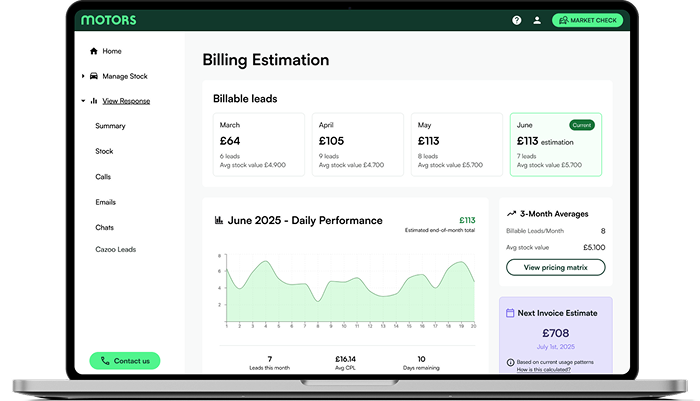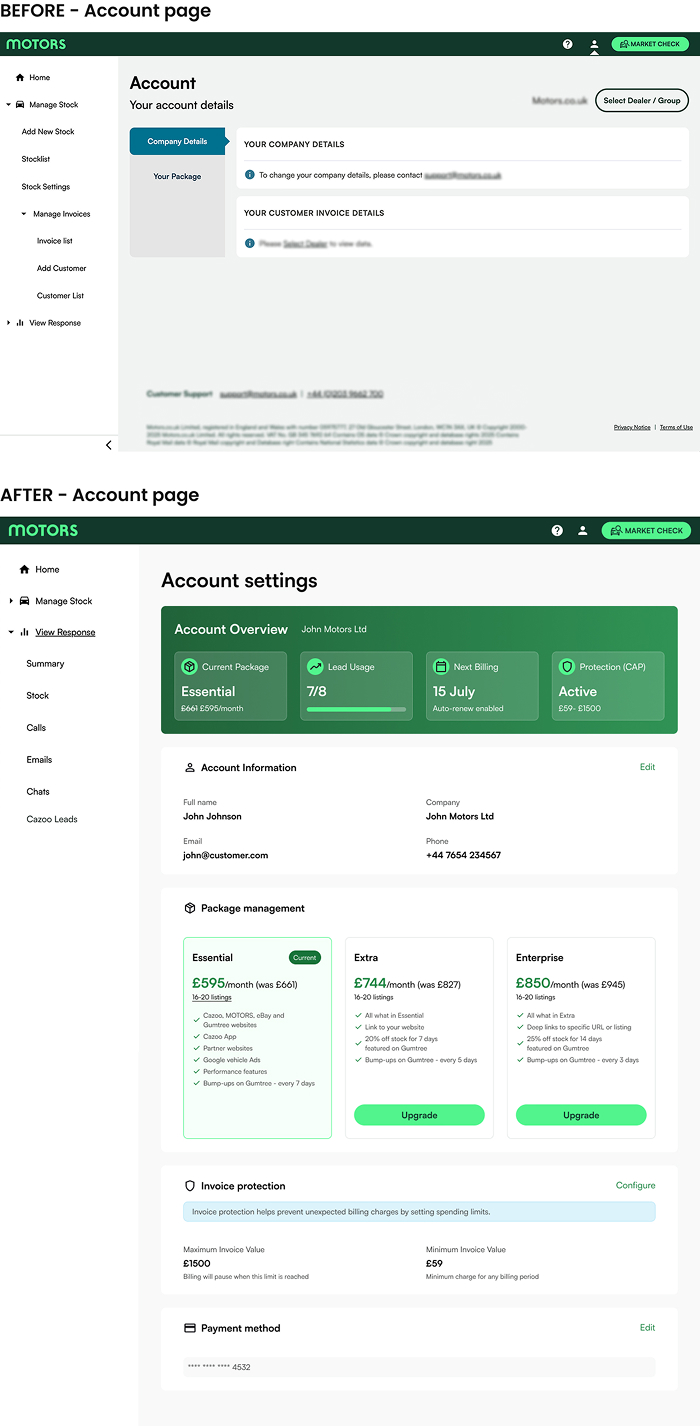CASE STUDY
Turning Ambiguity into Action: Designing a New Pricing Model
Rapidly aligned stakeholders, defined an MVP, and created tangible prototypes that transformed a vague vision into a shared, actionable product strategy.

CHALLENGE
Turning ambiguity into clarity for a strategically critical project
- No shared understanding of what the new pricing model meant for customers.
- No defined feature list, requirements, or validated MVP scope.
- Ambitious delivery deadline already set, while the value proposition was still unclear.
- A need to communicate the pricing shift simply enough that both internal teams and customers could understand it.
MY ROLE
Design tangible artifacts to suppport faster decision making
I joined on a short-term contract to cover paternity leave. Among several projects, the most strategically critical was a new pricing initiative: transitioning from a subscription-based billing model to a Cost-Per-Lead (CPL) approach.
When I joined, there was no confirmed value proposition, no research, and no clear design brief. The COO had a vision, but the details of how it would translate into the customer-facing product were undefined. My role was to turn ambiguity into clarity and give the business tangible artefacts to make faster decisions.

From zero brief to MVP definition in four weeks - aligning leadership, marketing, and product around a scalable pricing structure and user experience.
IMPACT
Designed Clarity for a New Pricing Model
With no clear brief, I partnered with leadership to define a direction for a new pricing model. Using AI-assisted prototyping in Figma, I delivered high-fidelity flows in just 2 weeks, iterated twice within the first month, and gave executives tangible artefacts to make confident product decisions faster.
- Strategic clarity: My designs turned a vague vision into concrete flows, enabling faster executive and PM decision-making.
- Cross-functional alignment: Used by engineers, sales, marketing, and research as the reference point for defining scope and testing.
- Acceleration: Two iterations in one month unblocked stalled conversations and helped define MVP.
- Shared understanding: Simplified storyboards and mockups became the business’s first clear articulation of the pricing model.
APPROACH
1. Establishing a Common Language
I started by breaking the concept into the most basic scenario. Using a simple PowerPoint, I created a “day in the life” example around a fictional customer, John. By asking “What changes for John?” I grounded abstract conversations in a concrete user case.
This became the first shared reference point with the COO, PMO, sales, and product.
2. Fast Iterations with High-Fidelity Mockups
Within two weeks of my initial conversation with the COO, I created the first high-fidelity mockups of how the CPL model could appear in the customer-facing product.
- I used AI-assisted mockups to accelerate early exploration.
- Delivered two iterations in the first month, which allowed stakeholders to see the model in action instead of debating theory.
- Ambitious delivery deadline already set, while the value proposition was still unclear.
- These designs were described by the new PMO as “finally helping me understand what the pricing is about.”
3. Designing for Transparency & Trust
In the UI, I focused on:
- Making the neglected Account section a central hub for billing and invoicing.
- Introducing a dedicated Leads section to show customers exactly what they were being charged for.
- Surfacing predictable estimates (e.g. end-of-month totals) to reduce billing anxiety.

High-fidelity billing page created from scratch to support the new Cost-Per-Lead pricing model. Designed to clearly communicate charges, surface predictable estimates, and reduce customer billing anxiety while enabling the business to test and align on MVP features.
4. Turning Design into a Decision-Making Tool
I was happy to see that my mockups became working tools for alignment:
- Helped the business define an MVP scope against a fixed deadline.
- Formed the basis for a feature breakdown list, which product and engineering used to assess technical needs.
- Enabled cross-functional discussions with sales, marketing, and developers.
- Supported user testing and focus groups, where designs acted as prompts to validate assumptions.
Reflection
This project reminded me that a missing brief doesn’t have to stop progress - it’s an opening to create clarity together. Working in ambiguity is rarely comfortable, but sometimes that “blue sky” space is exactly where meaningful design impact starts. It allows you to help the business shape its thinking, not just its product.
That said, it also takes a certain maturity from the organisation. Even when the designs look ready, there’s still work ahead - discovery, user research, testing, and feasibility checks. Design can move things forward fast, but the real value comes when those early concepts feed into a structured, informed decision-making process.